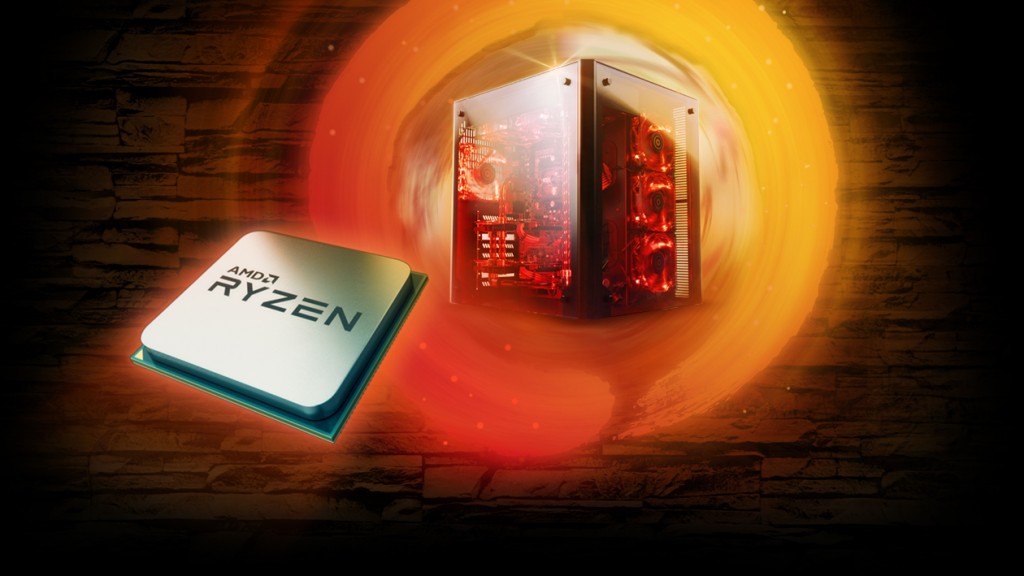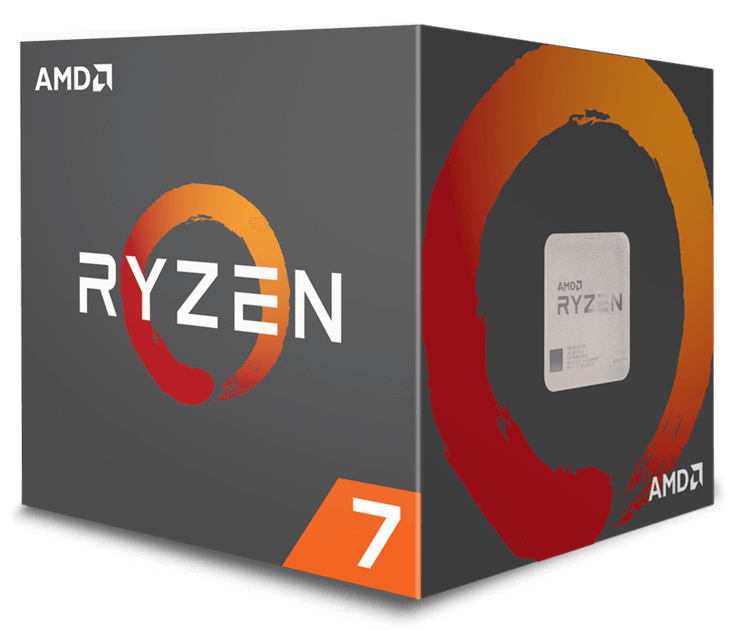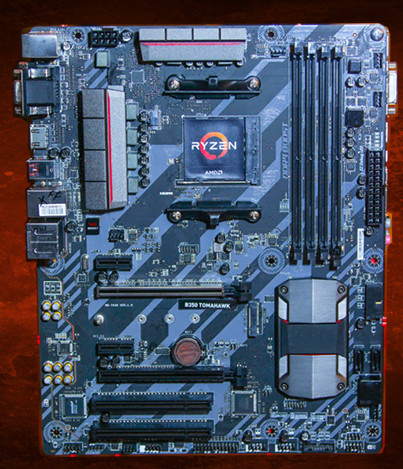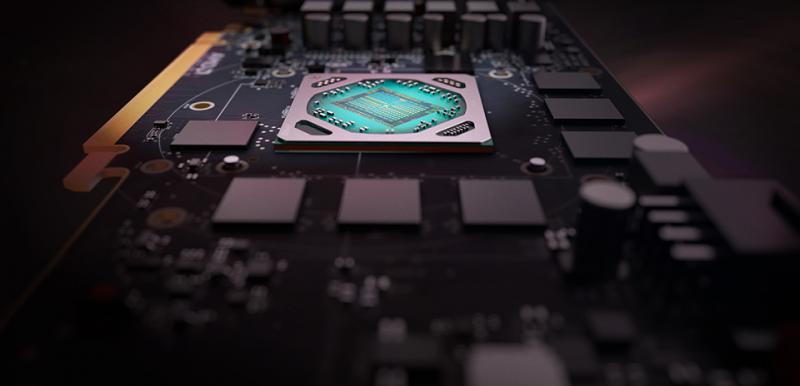How to build a PC with AMD Ryzen
AMD released its latest Ryzen series processors a few months ago and put out another batch of mid-range Ryzen chips last month. There’s still a ton of buzz swirling about AMD’s lineup.
Why?
They’ve entirely upended the CPU market. For the past several years, Intel has dominated virtually uncontested. AMD’s older offerings couldn’t compete. Ryzen marks a radical change to that dynamic.
While some of Intel’s chips may still be better for some applications, the Ryzen CPUs have a vastly superior price to performance ratio. So, even if a Ryzen chip isn’t quite as good as it’s direct Intel competitor, it costs significantly less, making it an all-around better value.
Ryzen also brings a revolution in multitasking. All of AMD’s new desktop CPUs are heavily multi-threaded, with the top end offering 8 cores and 16 threads. That’s insanely good for multitasking and for professional applications that require a lot of CPU power.
Alright, Ryzen sounds pretty great. How do you build with it?
Selecting a CPU
In any build scenario, you should base your choices around your use case. It doesn’t make sense to build a high end gaming PC to write text documents, and it certainly makes no sense to game on an office PC. What’s even crazier than any of that is needlessly spending money on a build.
R7 1700, 1700x, and 1800x
The R7 range are Ryzen’s top end CPUs. The difference between all three top chips is the default clock speed. All three chips boast 8 physical cores and 16 threads. These are beastly multitasking chips.
Workstations are the most obvious application for the R7 CPUs. Professionals who need a load of threads for compiling software, rendering video, or running complex 3D applications will see the most benefit from the R7 chips. Benchmarks have shown them to be comparable to Intel’s high end offerings that cost more than double what AMD’s silicon will set you back.
High end gamers and streamers will also see some huge benefits from top-of-the-line Ryzen. Most games will only utilize 4 threads on a processor. If you only game, having a quad core chip isn’t too big of a problem. Doing anything else will eat into your gaming performance under those circumstances.
So, if you multitask while gaming, especially if you stream your games, having the extra cores will make a huge difference. Streamers will also see the benefit of those extra threads in editing their videos.
R5 1600 and 1600x
Most gamers will do very well with the 1600 series Ryzen CPUs. Like the R7s, the difference between these two is the clock speed. Oddly, the 1600x also doesn’t come with a fan, while the 1600 does. There’s something to think about too. The R5 1600 series CPUs have 6 physical cores with 12 threads. That’s still a ton of multitasking power.
The 1600x actually reaches the same clock speeds as the 1800x, but with fewer cores. For gamers, this is an interesting opportunity. The 1600 series CPUs can achieve similar, if not the same, gaming performance as their higher end counterparts at half the price.
Since, most gamers don’t require 16 threads, the 1600 chips strike a perfect balance that still provide a nice amount of multi-threading power.
R5 1400 and 1500x
The lower end chips are more tailored for general use. That doesn’t mean that they aren’t extremely capable. They just aren’t as good as their higher end relatives for applications like gaming.
The 1400 and 1500x are both quad-core chips with 8 threads. The difference between the two once again comes down the clock speed, with the 1500x topping out around 3.7GHz on turbo.
If you’re looking for a solid budget gaming machine or a regular desktop computer that will be very quick running multiple applications, the 1400 or 1500x will be a great option.
Overclocking is a Big Deal
There’s another major consideration when purchasing a Ryzen CPU. Are you willing to overclock? With Ryzen in particular, it can save you a ton of money.
Remember how the CPUs in each set were only differentiated by their clock speed? Through overclocking, that difference can be eliminated completely.
For example, the R7 1800x overclocks to around 4GHz. It usually can’t go much higher. The R7 1700x and the R7 1700 also overclock to around 4GHz. The 1700 might only get to 3.8GHz or 3.9GHz, but it’s still very close.
What makes this even crazier is that those overclocks can be achieved with the stock cooler. You don’t even need to buy anything else.
You can actually do the exact same thing with the 1600 and the 1600x. There is virtually no difference between them with a decent overclock.
All of the Ryzen CPUs are overclockable, and overclocking them is generally very easy. Even if you haven’t overclocked before, it might be worth considering overclocking to save yourself a good chunk of cash.
Ryzen Motherboards
There are three chipsets available for Ryzen. A chipset determines the motherboard features, so it’s an important thing to consider. Having a bad chipset can severely limit your processor.
The three Ryzen chipsets are X370, B350, and A320. The first two are great. Given the costs, there is absolutely no reason to buy an A320 board.
It’s also important to note that Ryzen motherboards use socket AM4. They are not compatible with older AMD boards. As of now, all socket AM4 boards are compatible.
X370
The X370 boards are the most feature-rich boards available for the platform. They make use of as many CPU features and capabilities as possible. X370 boards allow overclocking and multiple GPUs through either Crossfire or SLI.
Generally, motherboard manufacturers deck out these boards with more USB and SATA ports, better sound cards, and multiple M.2 slots. They also tend to have better overclocking capabilities.
However, if you don’t need a lot of extras, X370 might be overkill.
B350
B350 is a good baseline board. It has all of the features that most people need, without many extras. B350 allows overclocking, but does not support multiple graphics cards.
It comes with enough ports for most average builds. Usually, these boards have one M.2. B350 provides solid quality without a lot of frills.
Blazing Fast RAM
Ryzen uses DDR4 RAM. It is not compatible with older standards. DDR4 is the current standard and is now the most common form of RAM to find.
DDR4 has much faster clock speeds than its predecessors. Ryzen takes advantage of that. Actually, benchmarks show that RAM speed makes a huge difference in gaming performance under Ryzen.
Even though a 2133MHz clock speed is the lowest speed that DDR4 has available, it’s highly advisable to use 3000MHz or higher RAM with Ryzen, especially if you’re playing games. If 3000MHz is outside your budget, go as high as you can. It makes a noticeable difference.
Hard Drives
Hard drives are hard drives. They haven’t changed much in a long time. Obviously, solid state drives are much faster than disk-based drives, and almost all drives will be connected over SATA.
That said, any modern drive will work in your build. If you can, choose a solid state drive for your operating system.
M.2 For Added Speed
M.2 is a relatively new way to connect solid state drives to a motherboard. It provides a direct socket on the motherboard that you can plug an M.2 SSD in to and get much faster transfer speeds than SATA.
A lot of Ryzen motherboards come with M.2 ports. It’s worth considering using an M.2 drive for your operating system.
Graphics Cards
Graphics cards aren’t really platform dependent. Any graphics card released over the last few years will work with any build from the same time frame. There are a couple of simple recommendations, though.
NVIDIA wins on pure power right now. For anyone looking for the absolute most powerful graphics cards for either super high end gaming or professional applications, look into NVIDIA’s top offerings. These would be the GTX 1080Ti, GTX 1080, and the GTX 1070.
If you’re a gamer that doesn’t need 4k resolution or the ability to run absolutely everything on ultra settings, there are some great mid-range cards that don’t cost a fortune. Any of these cards will play your games on a standard 1080p monitor in the higher range of settings.
NVIDIA fans can check out the GTX 1060. It’s a great card that just about any gamer would be happy with. AMD fans can take a look at the RX 580 and RX 570. You can also look at the RX 480 and RX 470. They’re basically the same cards. The RX 580/480 is very similar in performance to the GTX 1060.
Any lower end card will work, but you will lose some performance. If budget is a concern, or you are a more casual gamer, the RX 460 or GTX 1050 would be great. You can also look into anything below that, but know that performance will continue to suffer as you go lower.
Power Supplies
Power supplies are important. It’s always a good idea to invest in a reliable PSU. They can impact the overall stability of the system, prevent electrical damage, and even help to enable overclocking potential.
First off, don’t buy too much PSU. It doesn’t have a negative impact on your system, but it does waste money. Make sure that your power supply fits the wattage requirements of your system. You can calculate your system’s recommended voltage with Outer Vision’s calculator.
There are efficiency ratings for power supplies. They are as follows: bronze, silver, gold, platinum, titanium. Bronze is least efficient and titanium is most. It’s a good idea to choose a gold or platinum rated power supply, if you can.
It’s hard to recommend specific PSUs, but some brands usually stand out. Try to pick a Corsair, EVGA, or SeaSonic power supply. They tend to be well made and dependable. Of course, check the reviews on any PSU before buying. That’s the best way to get an accurate idea if it’s the right move.
Finding a Case
This is really a matter of preference. Almost any case will work. You have to make sure that your components will fit, though.
Check your motherboard. It will either be an ATX or mATX motherboard. mATX is smaller. Your case has to support whichever size you choose. There aren’t any ITX motherboards for Ryzen, yet. When they come, they’ll open up a range of much smaller cases.
Wrap Up
By now, you have a decent idea of how to build your own AMD Ryzen PC. Remember to look around and find the best options to meet your individual needs.
If you need any help, be sure to stop by the PCMech Forums to ask. Our community would be happy to lend you their expertise and insights.





















One thought on “How to build a PC with AMD Ryzen”